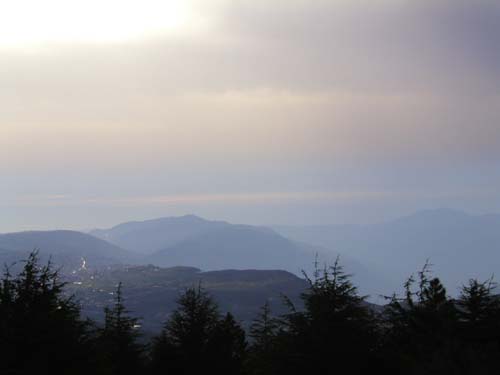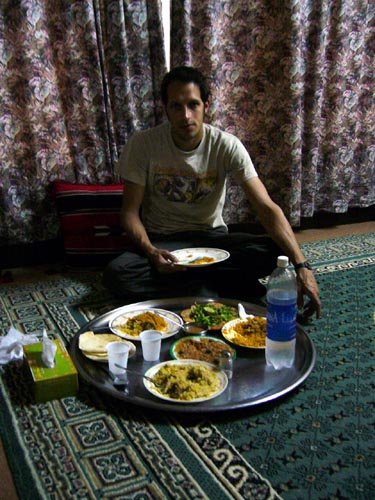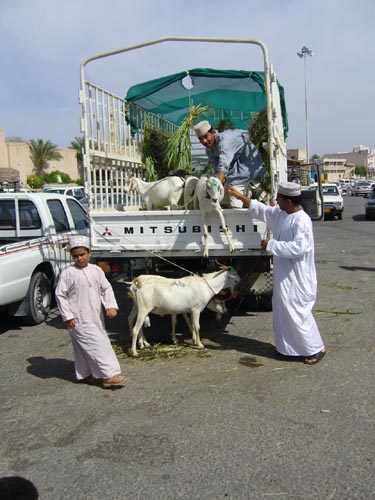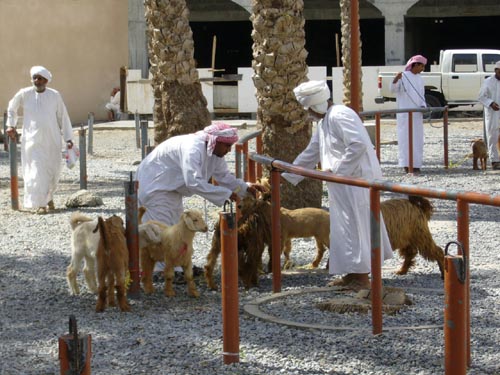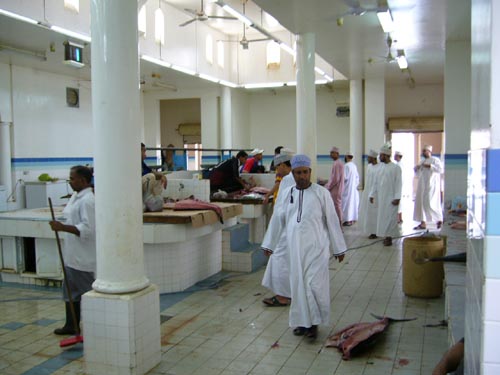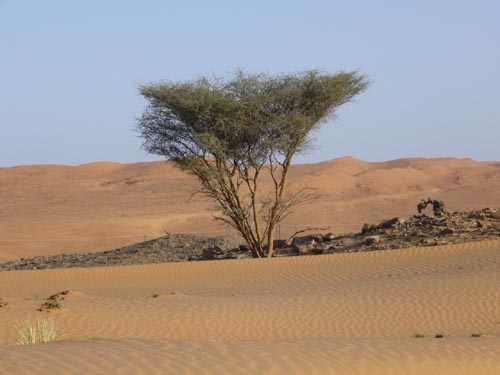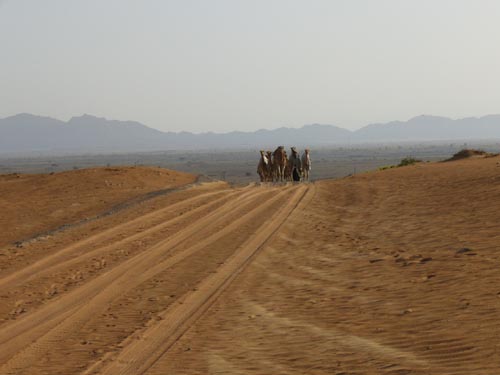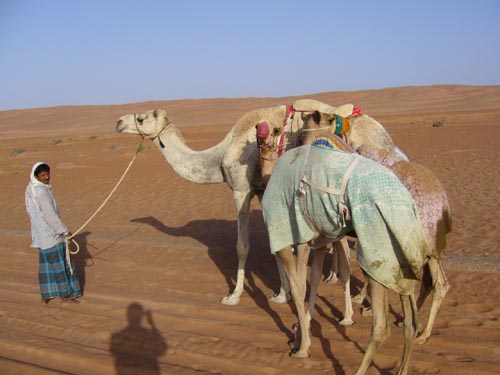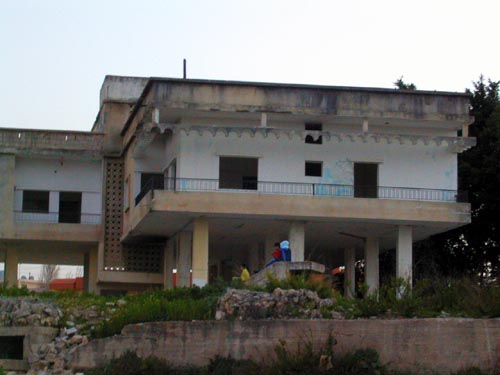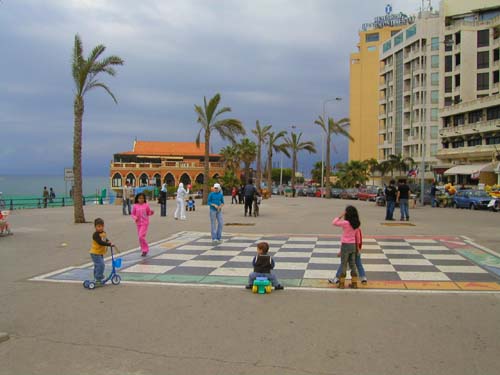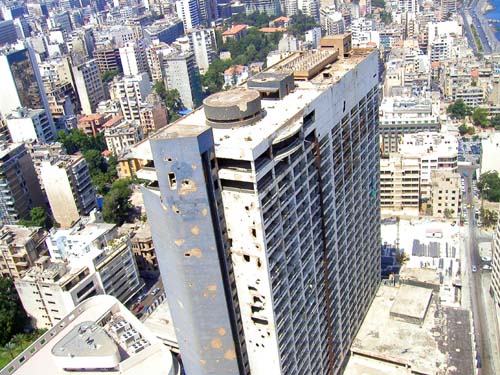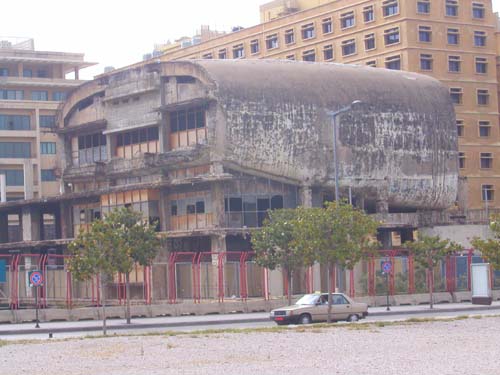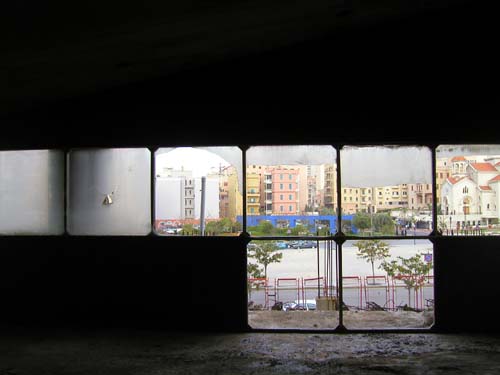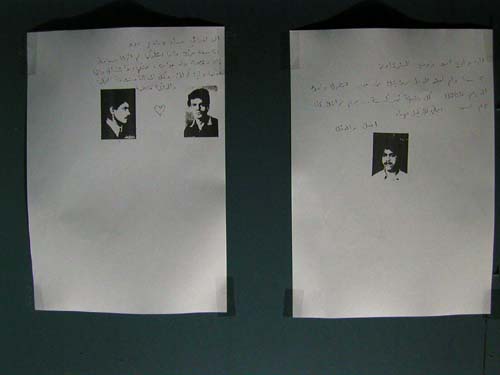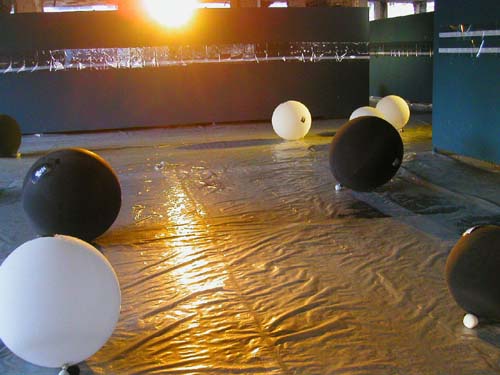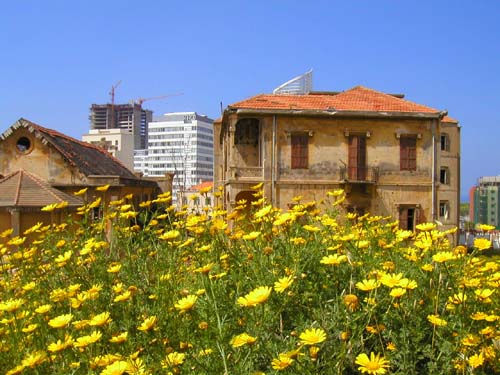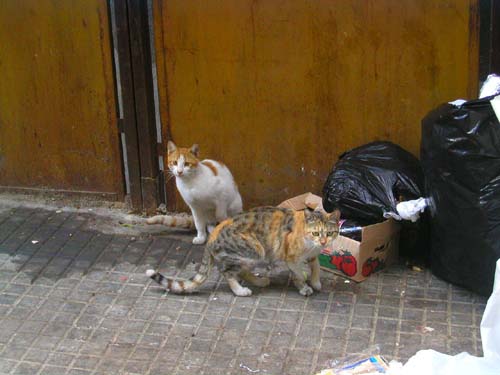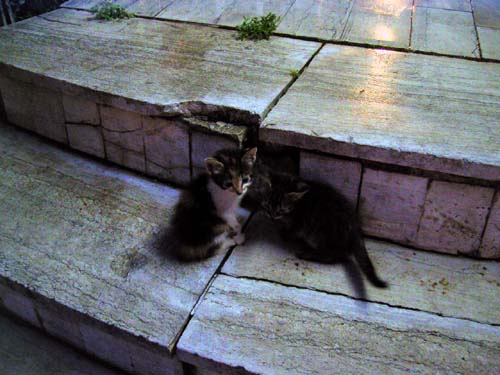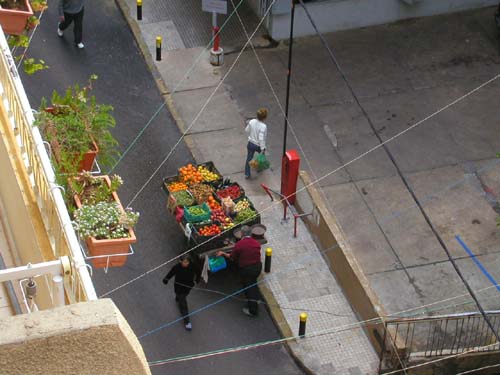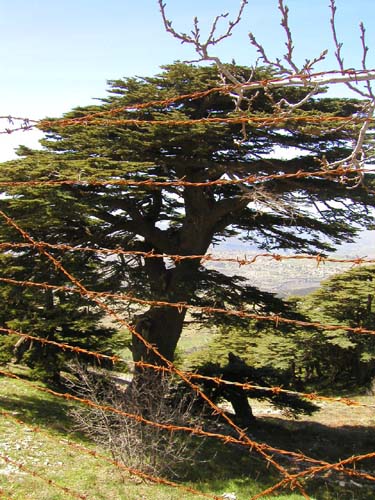
On Saturday, we rented a car with our friend, Bjorn, and drove to the Chouf Cedar Reserve to do a little hiking. The Chouf is the traditional area of Lebanese Druze, one of the minor but still significant religious groups in Lebanon. We paused on the way east to walk around Deir al Qamar (House of the Moon), a truly gorgeous little village.
We made it to Moukhtara, the home of Walid Jumblatt, the Druze leader. He is perhaps the most amusing of the major political players in Lebanon. He is well-known for “flip-flopping”, but for now he is very anti-Syria, which has led him to hole up for most of the last year inside his palace. During the recent “National Dialogue”, he left abruptly to fly to Washington to wave a map around – claiming to show that the Israeli-occupied Shebaa Farms belongs to Syria, and not Lebanon, therefore Hezbollah should disband. He is probably near the top of the list of those most-likely-to-be-assasinated.
Not surprisingly, there are checkpoints at all roads going in and out of Moukhtara. Our papers were checked numerous times, which sometimes seemed to be more a symptom of boredom and/or curiosity on the part of the soldiers than anything else. Eventually, we arrived at one of the entrances to the reserve, which was closed and locked. Sigh. We peered at the old growth cedars through the fence.
We attempted to drive over the mountain to Kefraya, but made a wrong turn and ended up reaching the end of the road, something we seem to be pretty good at when we drive around rural Lebanon. It turned out that the road is still closed for the winter and also is not paved.
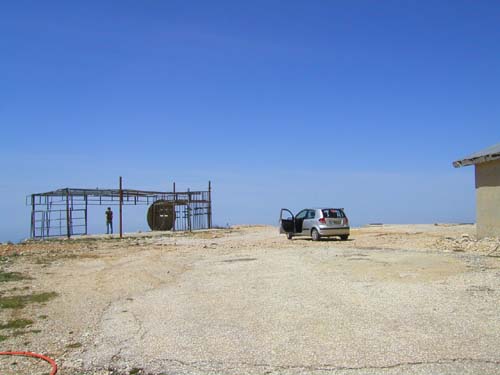
By this point, we realized we were starving, so we found a restaurant on the outskirts of Moukhtara. There was some sort of party going on, but the staff fit us in. The party consisted of about 50 young men and 3 or 4 young women, sporadically chanting, dancing, drumming, and singing while chugging glasses of arak. It was unclear what they were celebrating, but at one point they were singing (shouting) “Frere Jacques”. The food turned out to be surprisingly delicious, the moutabal (smoky eggplant dip) was some of the best I’ve had. We also ordered my current obsession, which is shanklish, a kind of cheese that you mix together with onion, parsley, tomato, and oil.
After getting lost a bit more, getting more directions in Arabic, and driving through some positively beautiful countryside, we made it to what turned out to be the main entrance to the reserve, near the village of Barouk. We elected to park the car at the entrance and walk 5 km to the old cedars, because it seemed that there weren’t actually really hiking trails, and it was just a drive to the top. The walk was all uphill, on pavement, so not ideal. That and it started getting late, so we turned back after we made it to the first old growth trees, maybe 4 km up.

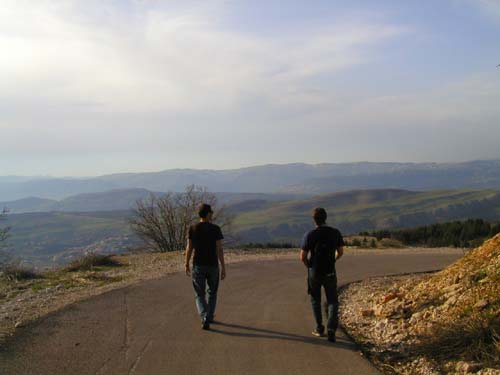
They are really something, the old cedar trees, with their spreading branches. Some are supposed to be over a thousand years old. The Mount Lebanon cedars are more celebrated, but there are more in the Chouf. The Chouf is also suffering from far less over-development. Compared to much of Lebanon, it is pretty unspoiled. I’m not sure why this is the case, but I want to make another trip to the Chouf before we go.
